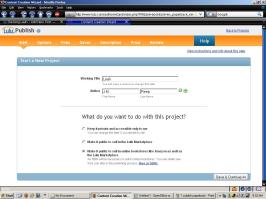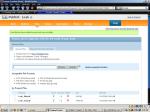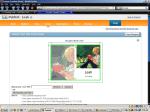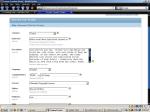In this final series of posts for Revising Leah, I’m going to document and comment upon how I am publishing my novel through Lulu. If you’ve ever wondered whether self-publishing is right for you, I hope you’ll follow along and learn out what it’s all about.
Lulu.com, and services like it, have become a force for the democratization of publishing. Now, anyone with a story to tell can publish one’s work. With this freedom, however, comes great responsibility. While it’s true that publishing through Lulu is easy and relatively inexpensive, if you want to do it right — if you want to produce a book that you can be proud of, that will sell — then there is a lot of work that you must do.
Revise and Edit! (Have you learned nothing from this blog?)
Obviously, the most important preparation involves carefully revising, editing, and proofreading your text so that you don’t give your readers the impression that you are barely literate. Even if the book you publish is for your eyes only, you don’t want it to be littered with errors and passages that you wish you had revised. If you do want your book to be read by others, then certainly you want it to look as professional as possible. If this means “beta testing” your manuscript with other readers or hiring an editor, then do it. Moriah Jovan had a nice rant on this subject over at Publishing Renaissance recently.
I’ve been working on my novel since April (and, of course, I have documented that process in this blog). My manuscript has reached a point where I am satisfied with it. I’m able to read through a chapter without seeing anything that needs to be changed or corrected. When I receive the galley proofs next month, I’ll probably find a few last minute errors that I ought to fix, but for now, I feel like the book is ready to go.
Formatting
So once the manuscript is the best it can be, it’s ready to be formatted. This may not sound like a big deal, but this is a step that you can expect will take a few days, at least.
The first step: page size and orientation. Lulu allows for several different possibilities for the size of a book, but the usual size for a novel published through Lulu is 9″x6″ — that’s a little bit larger than most novels published, but it’s not freakishly large or anything; it’s still easy to carry and hold in your hands and read.
You’ll need to format the pages so that they mirror each other. In other words, you have to imagine that page 1 of the novel will be on the right, page 2 on the left, page 3 on the right, etc. This can easily be set up within your word processor, usually in the same dialogue box that you used to set up the size of the page.
Lulu has specific requirements for the size of the margins. Basically, you’re setting up a half inch all around except for the inner margin (where the pages join at the book’s spine) which is a 3/4 inch margin.
Pretty easy so far? Well, now things get interesting. The next choice you have to make is the font style and size. Unless you are doing something wacky, you’ll probably want to stick to a size 12 or 13 font. The font style is up to you, though. Lulu has a list of font styles that they prefer you use, but it is possible to use others. I like to use Garamond because I think it looks really nice when the book is printed, but this is a subjective choice. There will be a lot more of these kinds of subjective choices as the process goes on. It can seem a little overwhelming, but this is what I like about self-publishing: the opportunity to direct all of the little details of the publishing process. I find it very satisfying. Satisfying, ultimately, but not always easy. . .
The Ninth Circle of Formatting Hell: Page Numbers
Nothing will frustrate you more than wrestling with the page numbers. Although I like to use OpenOffice for most of my word processing needs, the biggest beef that I have with the program is that it makes formatting up page numbers very, very difficult. In Microsoft’s Word, the process is much more simpler — in fact, it is so much easier that when I need to insert page numbers I often just open the file in Word, do my business there, and save it.
Depending on where you want the page numbers to go (top or bottom of the page), you might need to format breaks between the chapters. (I found this page online which helped explain how to do this in Word.) The purpose of creating a break between chapters is that it allows you to format the page numbers so that, if you choose, the page number won’t appear on the first page of the chapter. Depending on what the first page of each chapter looks like, you might not want the page number in the same place as the other numbers on the other pages. For example, if all of the page numbers for the rest of the text are in the top corners, maybe you want the page number on the first page of each chapter at the bottom of the page. Personally, I prefer not to include the page number on the first page of each chapter, but that’s just me. Whatever you decide to do, establishing formatting breaks between chapters makes this process easier.
At the same time that you are setting up the page numbers, you have to make a decision about whether you want your name and/or the title of your novel at the top of each page. And here is where you can literally do whatever you want. When I was setting up my page numbers, I sought inspiration and guidance by browsing through a dozen different books by as many different publishers. Almost every book had set up its page numbers and top margin material differently. Some put the numbers near the outer margin, some put them near the inner margin. Some books put the page number at the top of the page, others put the numbers on the bottom. Some books only used the title of the book, others used only the author’s name, others used the chapter title, others had a combination of some of these. Some books centered the material, others placed it near the page numbers. Apparently the only rule with page numbers and margin material is that there are no rules. You can do whatever you want.
So this has been a glimpse at some of the work you have to do when preparing the manuscript for Lulu’s publishing process. I thought you might want an example of what I’ve done, so take a look at this file:
Chapter One
It’s the first chapter of my novel, formatted more or less the way it will look when it is published. Look at my font, my spacing, the page numbers and headings, the first page of the chapter, etc. Again, you don’t have to format your manuscript exactly as I have formatted mine, but hopefully it will reinforce the idea that your text should look clean, neat, and organized — in other words, professional.
Next time: Preparing the title page and the book cover.





